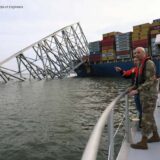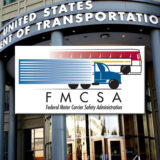Ace Hardware trucker vindicated second time by appeals court
Ace Hardware and one of its drivers have escaped a personal injury lawsuit for a second time after a California appeals court upheld a jury’s decision in favor of the trucker.
On June 12, the Sixth Appellate District Court in California affirmed a trial court jury’s verdict absolving Ace Hardware and Robert Burton, an Ace Hardware trucker, of blame for a crash. Svetlana Owens, who filed the lawsuit, appealed the jury decision. The case came down to who crossed the double yellow lines into the other vehicle’s lane.
The crash goes back more than eight years ago. In January 2012, Burton was a driving an Ace Hardware tractor-trailer on Highway 68 in Monterey County, Calif.
According to court documents, Burton was a 25-year trucking veteran with no reportable crashes at the time. The past 17 years were with Ace Hardware.
During trial, Burton’s track record was used to emphasize the claim that he was well aware of the movements of a tractor-trailer when making a turn.
The particular route Burton was driving was also nothing new to him. He had been driving that same route twice a week for about five years. Burton knew how to navigate a potentially dangerous section with several S-curves, his attorneys argued. At about 7 a.m. on Jan. 20, 2012, Burton was driving eastbound on one of those S-curves at about 30 mph when he noticed headlights from a westbound vehicle. He immediately checked to make sure the trailer was inside his lane. However, the westbound car crashed into the Ace Hardware trailer at “the apex of that turn,” Burton testified.
Ronald Lee Berti, a witness, was driving approximately 80 feet behind Burton’s truck. Berti confirmed that the weather was “wet and misty” but it was light outside with good visibility. He also confirmed that Burton’s tractor-trailer was always in the correct lane. The headlights of the car coming westbound, which was Owens’, “never turned” and “went straight under the truck,” Berti testified, suggesting Owens crossed the double yellow lines. He claimed to see Owens’ car hit the trailer tires, bounce off and start sliding down the road. It was then when the car behind Owens struck her.
Rizelle Custodio was driving the car behind Owens. Custodio also testified that she saw the truck in its own lane when she saw Owens hit it.
Owens’ recollection of the events was different. She claimed that when making the turn, the Ace Hardware trailer suddenly appeared and she drove straight under it.
Owens also claimed she never crossed the double yellow lines. As a result of the crash, she suffered a severe traumatic brain injury, a fractured pelvis and other injuries.
Owens’ claims also were challenged by the California Highway Patrol. John Yerace, the CHP officer who investigated the scene, concluded that Owens’ car had crossed the double yellow lines and collided with the trailer in the trailer’s lane.
There was only one witness who corroborated Owens’ side of the story: her own expert witness. During trial, Ted Kobayashi used a computer-generated simulation to determine the tractor-trailer crossed over into Owens’ lane. Although the conclusion was consistent with Owens’, the simulation was not. To start, it showed Burton’s tractor to be the point of impact, not the trailer. Kobayashi conceded that one could come up with scenarios where the impact occurred on either side of the road.
Presenting evidence in favor of Burton and Ace Hardware, Anthony Dominic Cornetto III, an engineer, testified for the defense as an expert on accident reconstruction. Cornetto testified that Kobayashi’s reconstruction of the accident was inaccurate. More specifically, Kobayashi’s software program treated the impact as if it had been into the side of the trailer or the front of the tractor. However, the crash occurred into the underside of the trailer and the trailer’s wheels. Kobayashi’s reconstruction was also inconsistent with the final resting places of the vehicles.
During the trial, Burton’s attorneys essentially told the jury to ignore either of the expert witnesses.
“I think honestly the experts get in the way of this case,” Burton’s attorney told the jury. “It’s perfectly clear from the two eyewitnesses and the officer as to what happened.”
The jury agreed and returned a verdict finding neither Burton nor Ace Hardware were negligent. Owens filed a motion for a new trial raising the same issues. That motion was denied and an appeal was filed. She argued the trial court should have granted her request that the jury be instructed that the applicable standard of care was “extreme caution” because “driving a tractor-trailer through the S’s on (Highway 68) is dangerous in and of itself.”
Owens’ appeal relied on 49 CFR Section 392.14:
Extreme caution in the operation of a commercial motor vehicle shall be exercised when hazardous conditions, such as those caused by snow, ice, sleet, fog, mist, rain, dust, or smoke, adversely affect visibility or traction. Speed shall be reduced when such conditions exist. If conditions become sufficiently dangerous, the operation of the commercial motor vehicle shall be discontinued and shall not be resumed until the commercial motor vehicle can be safely operated.
In her appeal, Owens pointed to another case that relied on that regulation. However, the appellate panel pointed out that in that case the issue “was whether the commercial truck driver’s speed exceeded that appropriate for the weather conditions, an issue explicitly addressed by the federal regulation,” according to the opinion. In Owens’ case, the issue was crossing the double yellow line.
No evidence was presented to suggest that either speed or weather conditions were a factor.
Consequently, the trial court was correct in not giving the jury instructions pertaining to federal regulations.
“The jury was essentially instructed that it was required to find Burton negligent if his vehicle crossed over the double yellow line,” the appellate panel stated. “Under these circumstances, the trial court’s instructions on the standard of care, even if they had been erroneous, could not have had any impact on the jury’s verdict.”









